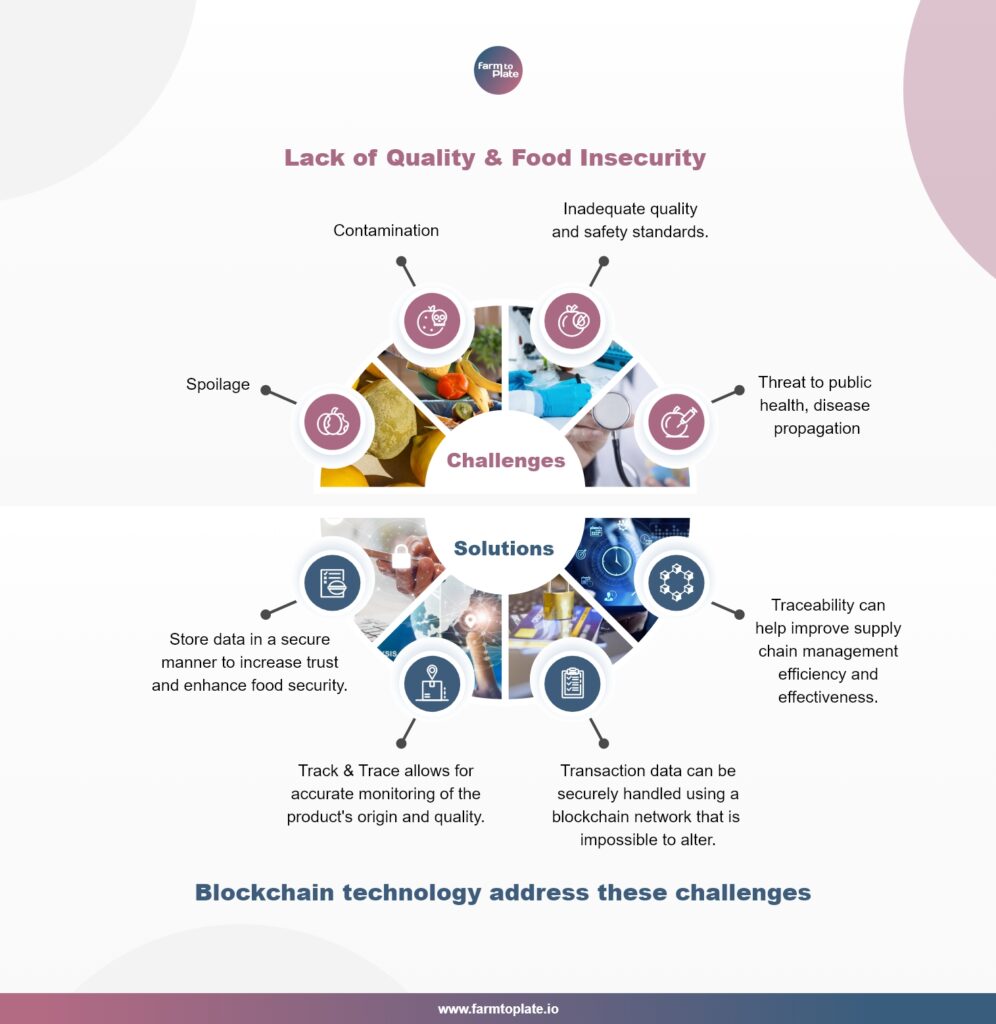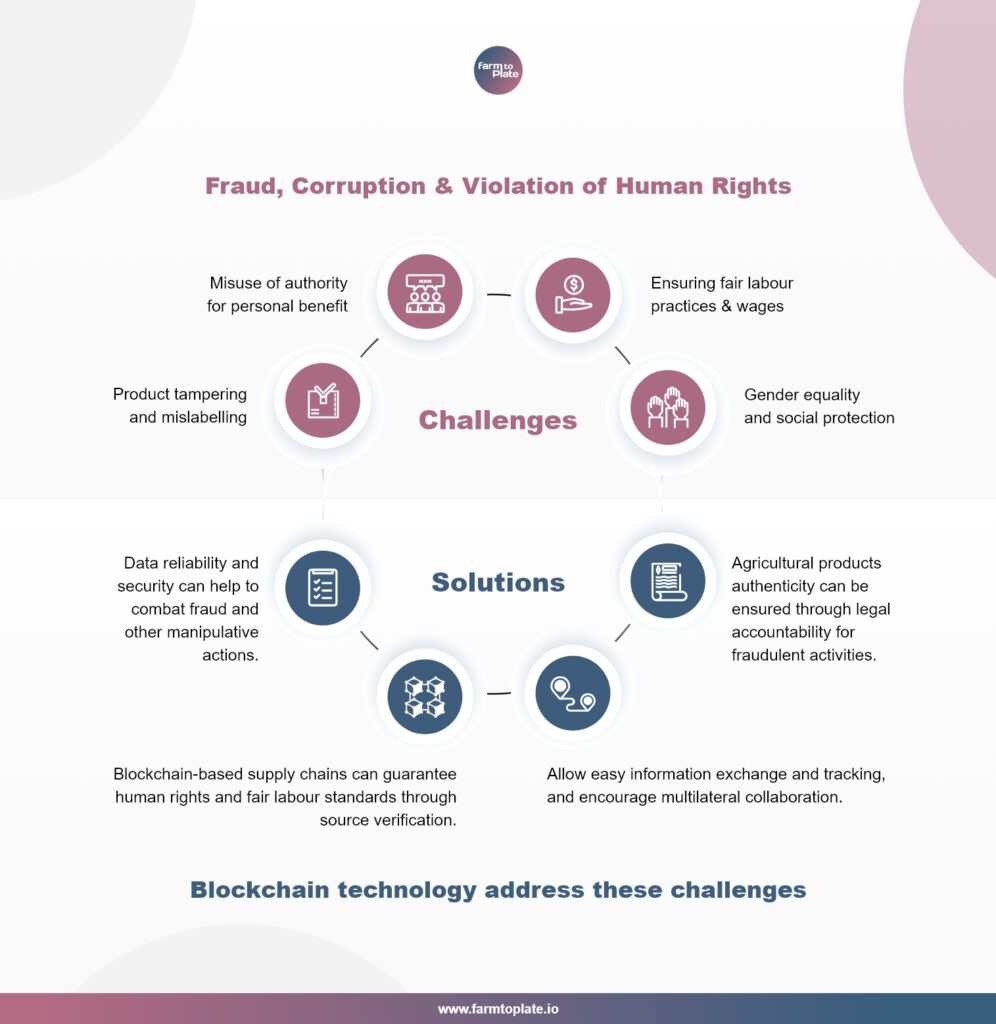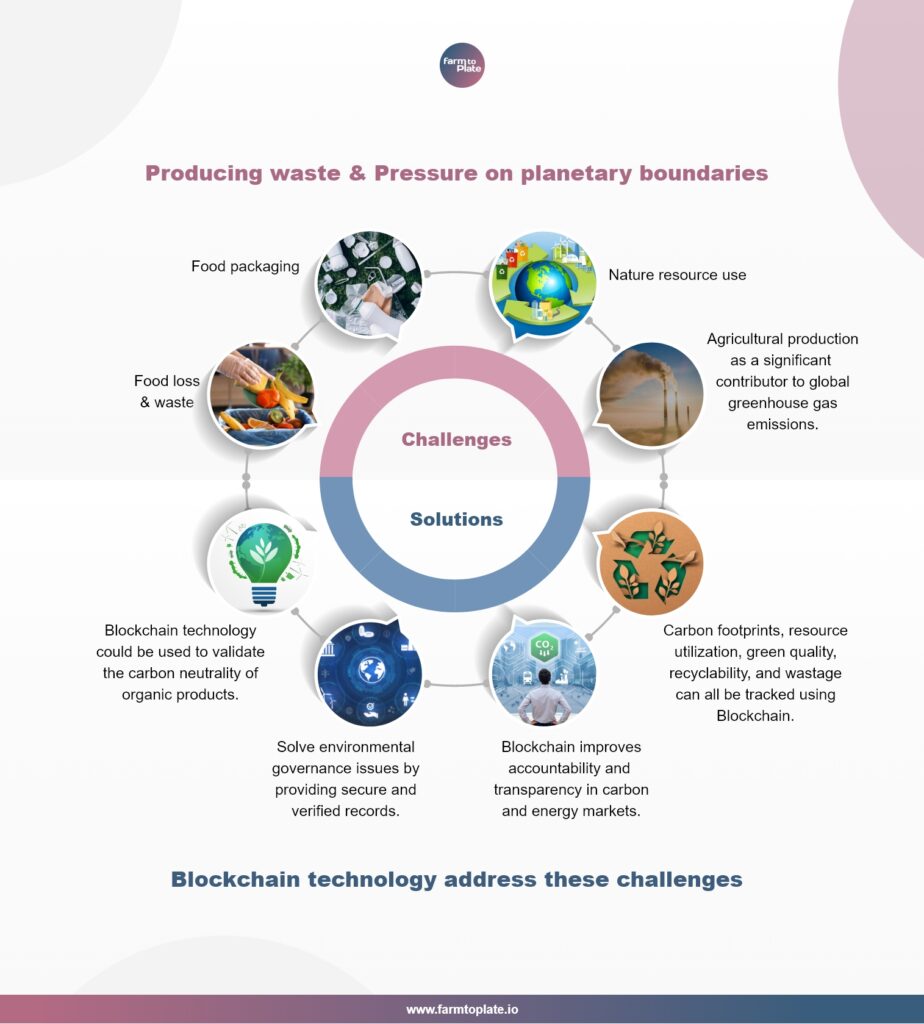In this article, you will get a brief overview of how Blockchain solutions have been hailed as having the potential to revolutionize the supply chain as a unique breakthrough capable of providing both profits and a social purpose.
The United Nations established 17 global goals in 2015 to tackle poverty, inequality, environmental degradation, and other issues by 2030. These Sustainable Development Goals (SDGs) reflect unprecedented worldwide collaboration in human history. Now, 100+ nations have adopted the SDGs. It provides a framework and roadmap for attaining long-term global prosperity and bind participating countries to be individual and collaborative actions for the benefit of everyone on the planet.
Food Security
Achieving food security is challenging, with an estimated global population of 9.7 billion by 2030. Food security is described as a situation in which all people have physical and economic access to enough, safe, and nutritious food that fits their dietary needs and food choices for an active and healthy life at all times. Food insecurity has several causes, including social and economic inequity and environmental changes. The consequences of food insecurity often reinforce other socio-economic issues such as poverty, malnutrition, infectious diseases, and unemployment.
The development of a sustainable food system necessitates the improvement of supply chain sustainability. From harvest to processing, distribution, retail, and consumption, food supply chains reflect all players and actions involved in making food available to the ultimate customer. Food supply chain management must assure food quality, safety, and freshness while also ensuring environmental sustainability to achieve food security.
The food supply chain issues

The food supply chain has sustainability concerns and identifies three significant issues: traceability in the food supply chain, lack of transparency, and harmful effects on the environment, all of these can be solved using Blockchain technology.
1. Traceability in the Food Supply Chain
Food traceability is critical for food quality and safety, and it is one of the most challenging tasks. The interconnection and globalization of the food supply network create vulnerabilities if food products cannot be tracked and traced throughout every stage.
The vulnerability of food supply chains is mainly due to the nature of produce, as perishable goods require precise management to meet high standards of food safety and quality. Traceability is also necessary for adequately managing supply chain recalls, as it may reduce risks and control hazards that could potentially ruin food safety and brand value.

Blockchain can improve traceability in food supply chains through decentralized and secure databases that establish trust and properly retain data, allowing greater food security.
Blockchain applications avoid intermediaries that simplify, connect supply chain participants, and decrease risks of recalls. Traceability expansions in food supply chains can help better track products allowing for better verification of the product’s origin and quality.
2. Lack of Transparency in the Supply Chain
Unsustainability in food supply chains is exacerbated by a lack of transparency on labor practices and human rights violations. Because of the complexity of food supply chains, geographic spread, dangerous working conditions, and modern slavery practices have violated workers’ rights.
Lack of transparency also leads to food supply chain fraud and corruption. Fraud and corruption may cause irreparable social and economic harm. Thus, they must be addressed to ensure the long-term viability of the food supply chain.

Blockchain’s distributed trust mechanisms can make supply chains considerably more transparent. Unauthorized modifications are impossible since the data in a Blockchain is irreversible and relies on the network’s consensus, which can help reduce fraud and corruption by assuring the legitimacy of agricultural goods.
Blockchain technology can help create an enabling environment for verifying and monitoring supply chain operations and guaranteeing sustainable labor practices by increasing trust and multilateral collaboration among supply chain participants.
3. Harmful effects on the environment
The unfavorable carbon footprint of an unsustainable food supply system is driven by two interconnected issues: waste generation and planetary boundary pressure. Estimated one-third of all food produced is squandered throughout supply chain operations such as harvesting, transportation, storage, and retail.
Food system losses are highest in agricultural wastes and other losses before harvest. However, the most considerable rates of failure are related to cattle production. Commercial food waste remains egregiously high in rich nations’ post-consumer stages. Food loss and wastage are responsible for roughly 8% of worldwide human greenhouse gas emissions and contribute considerably to climate change.
The world’s population has grown, and the need for food is putting further strain on our planet’s biophysical boundaries. Agriculture production is the primary cause of the Earth system violating planetary boundaries; specifically, the two overstepped planetary boundaries are Biosphere Integrity and Biochemical Flows.
Farm food production is responsible for around 30% of global greenhouse gas emissions and covers approximately 40% of the Earth’s land surface. It is one of the significant contributors to climate change. Aside from releasing emissions from food production, transportation also adds to growing greenhouse gas levels since food frequently travels long distances before reaching customers’ plates.

Blockchain has been proposed to help address environmental sustainability challenges by providing a secure and traceable record. Blockchain can advance impact monitoring is to improve environmental sustainability. Blockchain can decrease the environmental effect and foster the notion of a circular economy by creating opportunities to indicate where food originates, how food is processed and transported, and under what environmental conditions food is produced.
Namrata Anand, Technical Content Writer at Paramount Software Solutions & farmtoplate.io
